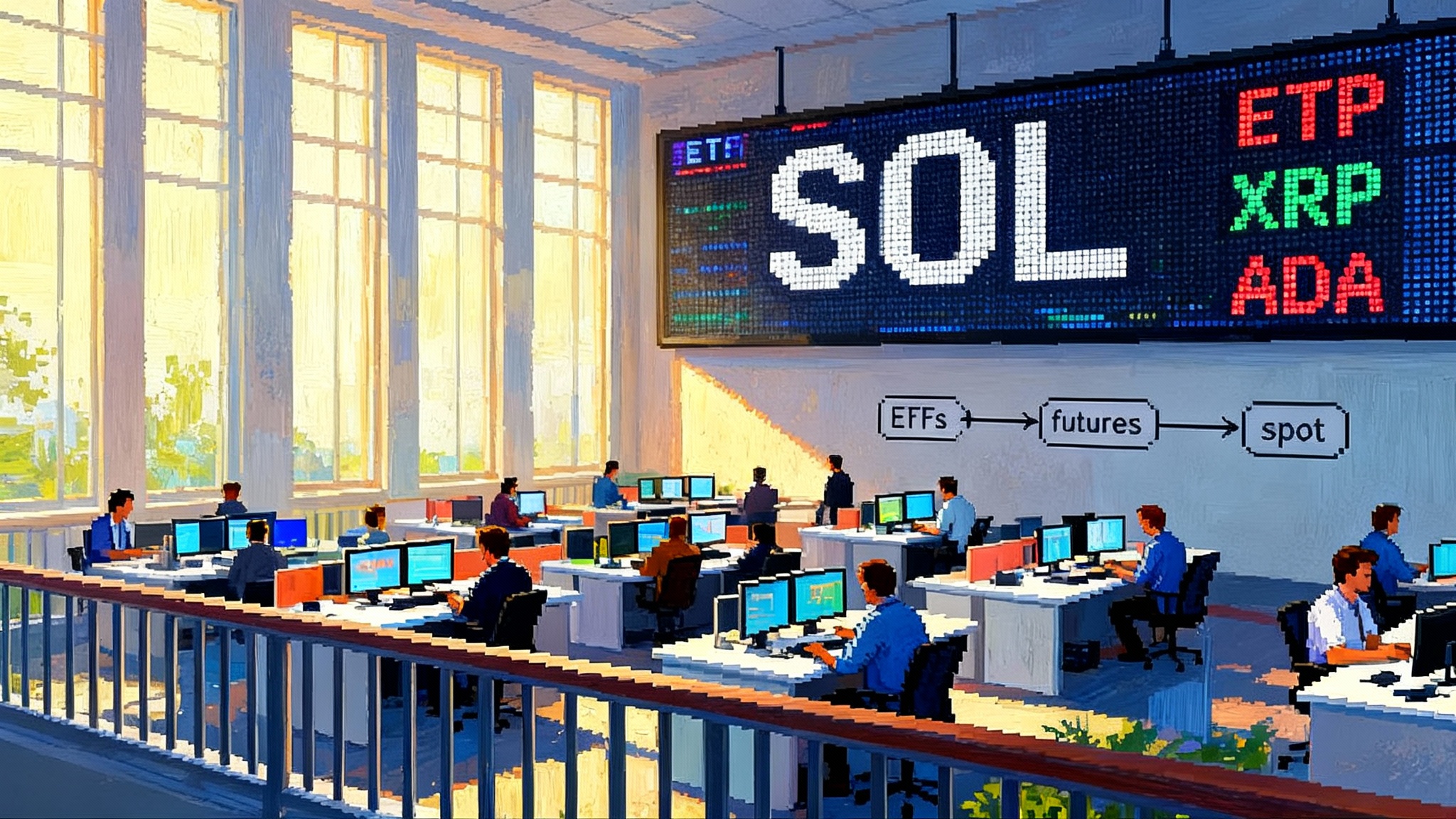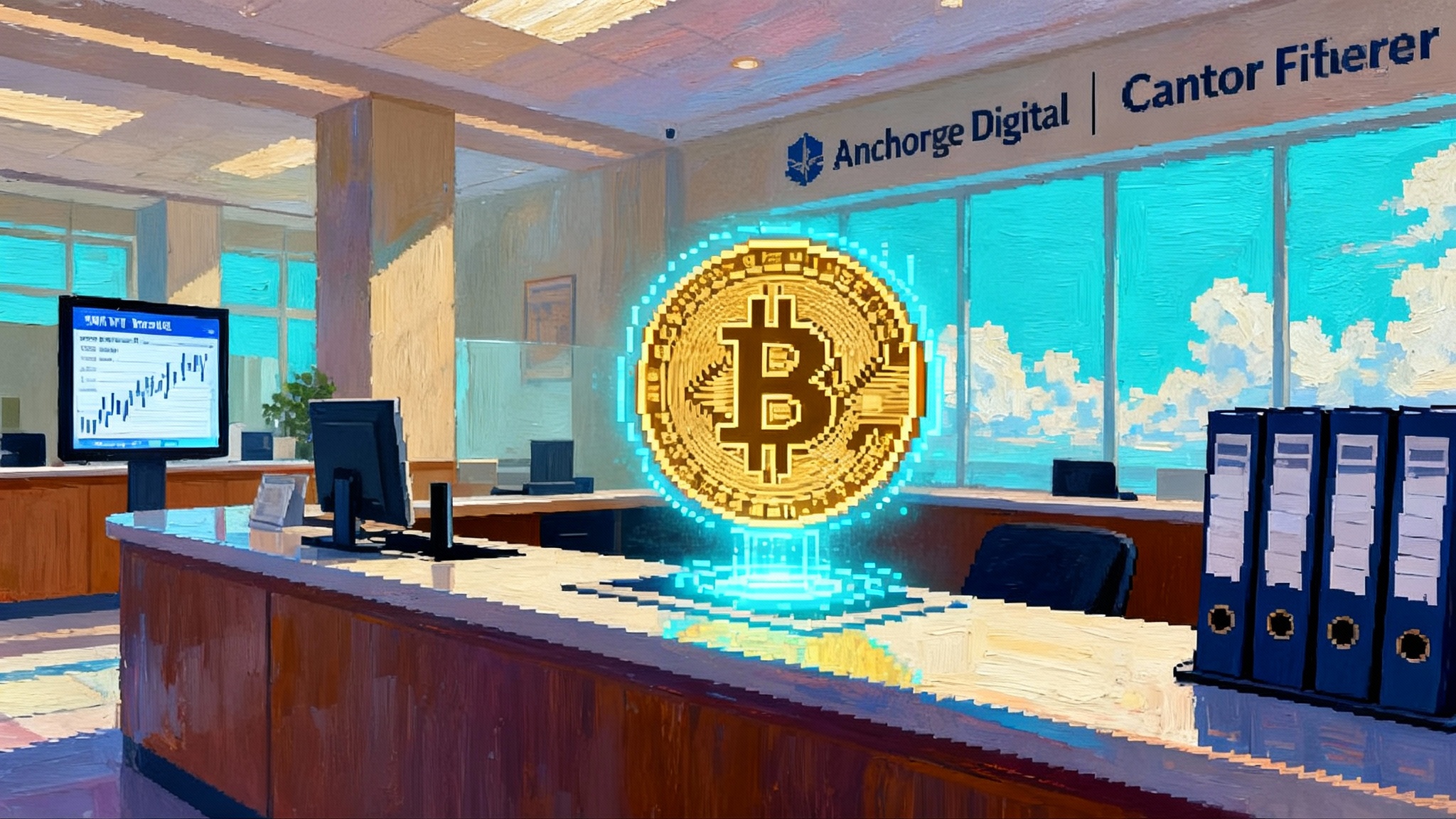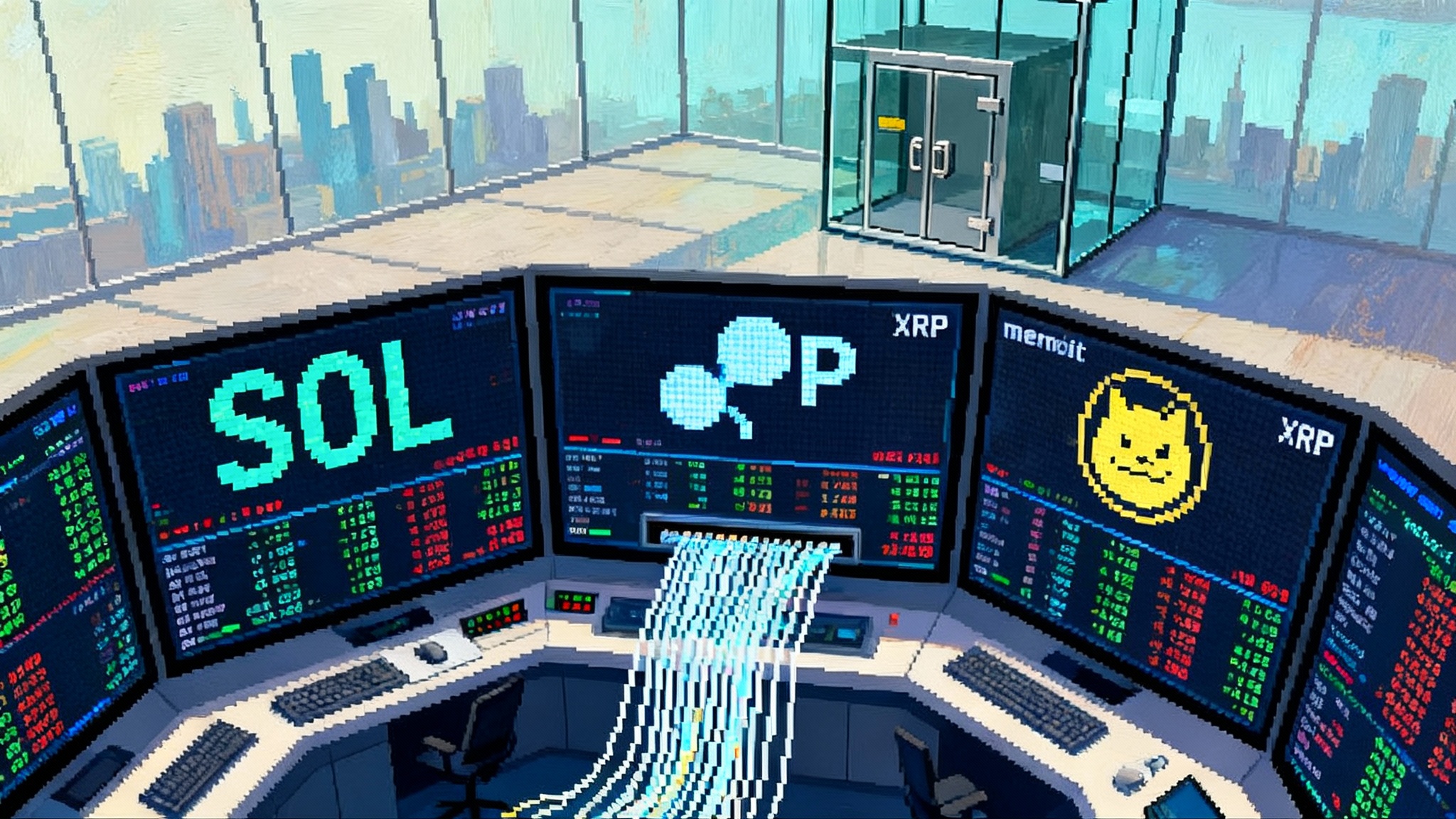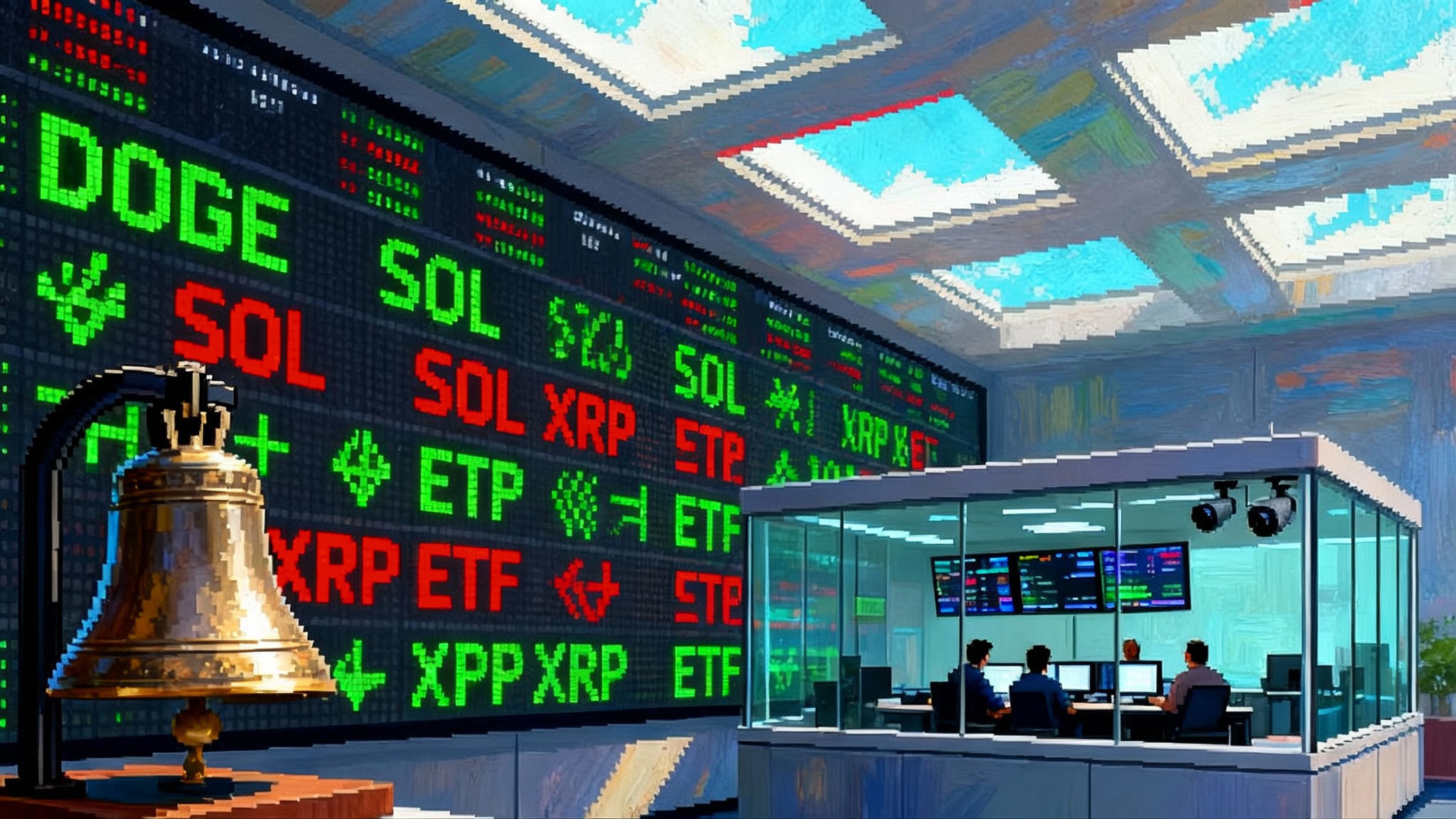How SEC’s new rules unleashed Dogecoin and XRP ETFs overnight
The SEC’s Sept 17 approval of generic listing standards for commodity-based ETPs, paired with July 29 in-kind creation and redemption orders, cleared the path for Cboe to list REX‑Osprey’s Dogecoin and XRP ETFs on Sept 18. Here is what changes next.
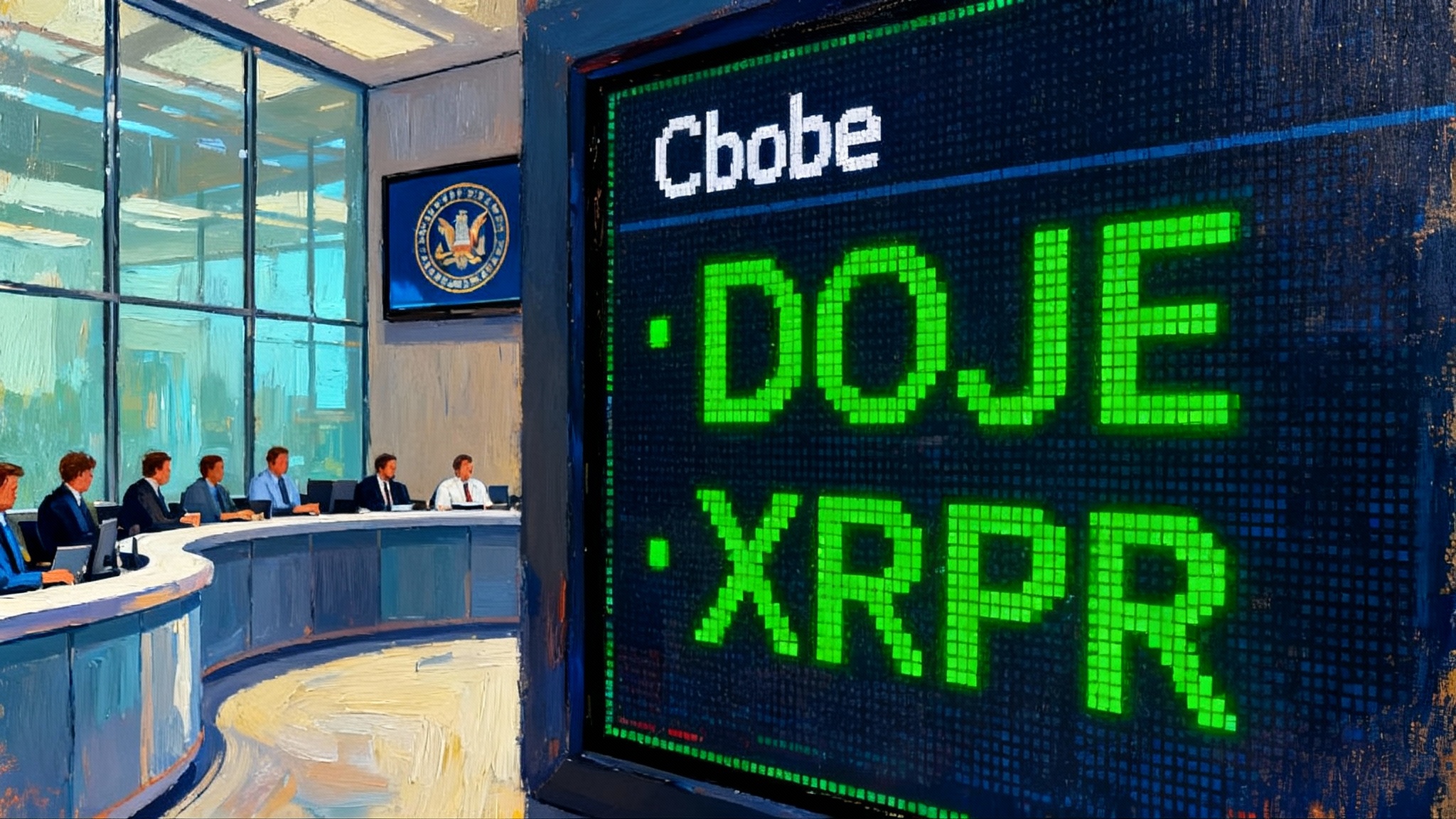
The 48 hours that changed altcoin ETFs
In the span of two market sessions, the crypto ETF playbook in the United States shifted. On September 17, 2025, the SEC approved generic listing standards that let exchanges list certain commodity-based ETPs, including those holding spot crypto commodities, without a product-by-product 19b-4 approval if they meet objective criteria. That single vote removed a key procedural chokepoint and signaled that altcoin exposure would not be forced through bespoke orders forever. The Commission published the decision in a detailed release, which set out how Nasdaq, NYSE Arca, and Cboe can bring these products to market more quickly under Rule 19b-4(e) once eligibility tests are met (SEC press release on generic listing standards).
One day later, on September 18, Cboe listed two firsts from REX‑Osprey: the REX‑Osprey DOGE ETF (DOJE) and the REX‑Osprey XRP ETF (XRPR). The dual launch was not only about novelty. It showcased what becomes possible when you remove friction at both the front door of listing and the back door of creations and redemptions. That back door was unlocked weeks earlier, on July 29, when the SEC permitted in‑kind creations and redemptions for crypto ETPs, aligning them with how commodity ETPs typically operate (SEC statement on in‑kind creates and redeems).
Combined, these two policy shifts turned what would have been a months-long regulatory relay into a sprint.
What exactly changed in the rulebook
The September 17 order did two big things that matter for the next wave of altcoin products:
- It allowed exchanges to list Commodity‑Based Trust Shares that satisfy generic listing standards without filing a separate 19b‑4 for each new product. In practice, this moves many crypto‑commodity ETPs from a world of bespoke orders to a rules-driven, faster path.
- It offered three alternative eligibility rails for the underlying commodity: trading on a market with Intermarket Surveillance Group connectivity, a futures contract that has traded at least six months on a CFTC‑regulated designated contract market, or the existence of an exchange‑listed ETF that already provides at least 40 percent exposure to that commodity.
The July 29 in‑kind decision did something just as important for how these funds function day to day. It brought crypto ETP plumbing closer to the standard commodity ETF model. When authorized participants can deliver or receive the underlying asset directly, spreads usually compress, primary market frictions fade, and tracking improves. During volatile sessions, that can be the difference between an orderly ETF and one that disconnects from its net asset value.
How that enabled DOJE and XRPR so quickly
REX‑Osprey moved fast because two historic points of friction eased almost at once.
- Exchange comfort and speed: With generic listing standards in place, Cboe had a clear, rules-based framework to consider altcoin exposure. That does not mean every new crypto ETP is automatic. It does mean the exchange can lean on published criteria rather than waiting for a bespoke Commission order each time a sponsor wants to list exposure to a new crypto commodity.
- Market plumbing: With in‑kind now available, market makers and authorized participants can treat crypto ETP baskets more like other commodity ETPs. That lowers the operational cost of committing capital to make tight markets, which is particularly useful for tokens where liquidity is fragmented across venues and time zones.
There is a structural nuance here. The first movers, DOJE and XRPR, are registered under the Investment Company Act and use a mix of direct holdings, other exchange‑traded instruments, and permitted derivatives to deliver exposure. They are not the same vehicle as a single‑asset commodity trust that holds only the token. That distinction matters less for the headline and more for the road ahead. The generic listing standards approved on September 17 are specifically designed to make it easier to list trust-style products that physically hold the commodity. In other words, the first two funds demonstrate demand and operational readiness, while the rule change opens the door for the next generation of purer spot trusts tied to altcoins that meet the eligibility rails.
The market structure impact
Altcoin ETFs will live or die on microstructure. Two changes tilt the field toward viability:
- Primary market efficiency: In‑kind creates and redeems allow authorized participants to assemble baskets without forcing the fund to trade in cash. For less liquid, more volatile tokens, cash-only mechanics mean more slippage, larger hedging errors, and wider spreads. In‑kind lets pros use their existing token inventory and prime brokerage lines to keep the ETF’s primary market humming.
- Rule‑based listings: Exchanges can plan listings and market maker seeding with more certainty. Under 19b‑4, scheduling was as much about the Commission’s calendar as the exchange’s. Under generic standards, the gating is whether the eligibility criteria are met, not whether the product gets a bespoke Commission order.
For the secondary market, expect three practical effects once more altcoin products arrive:
-
Tighter spreads over time, as more authorized participants are willing to make markets when they can create and redeem in‑kind and hold inventory directly.
-
Better tracking, because arbitrage channels between ETF shares and the underlying token become cheaper to run. That said, tracking for altcoins will still depend on the quality of reference pricing and the health of the underlying spot venues.
-
Concentration of liquidity on one or two exchanges that are first to lean into the new regime. Early trading in Bitcoin and Ether ETFs clustered around the exchanges that invested earliest in issuer relationships and market maker connectivity. Expect a similar dynamic with altcoins.
Surveillance and investor protections
Generic listing does not mean generic oversight. The approved standards still require exchanges to maintain surveillance capable of detecting and deterring manipulation. The eligibility rails are an attempt to anchor that surveillance in observable markets and data sharing.
- ISG connectivity: If a material share of trading occurs on ISG‑connected markets, exchanges can tap cross‑market data for surveillance. That is rare for crypto, where trading is mostly on non‑ISG crypto venues.
- Futures for six months on a CFTC DCM: This rail imports the price discovery and surveillance that exist in the regulated futures market. For altcoins where regulated futures exist and trade with depth, this path is likely to be the workhorse.
- The 40 percent ETF test: If there is already an exchange‑listed ETF with at least 40 percent exposure to a commodity, that can bootstrap eligibility for trust shares holding that same commodity. This is a bridge from the 40‑Act ETF ecosystem into the commodity trust world. It is most directly useful for large, already‑listed exposures and multi‑asset baskets that concentrate in a few names.
Exchanges still have to police listing standards, publish required disclosures within five business days of first trade, and monitor for unusual trading. Issuers still register their securities, disclose risks like concentrated custody and venue reliance, and maintain robust pricing methodologies. None of that guarantees investor protection. It does, however, replace subjective, one‑off reviews with a clearer set of rails that can be challenged and improved over time.
The flip side of speed is selection risk. A rules-based funnel will admit some products that are thinly traded, easily gamed, or culturally driven. Memecoins are beloved communities, not balance sheets. Investors will need to read prospectuses closely, understand what exposure method a fund actually uses, and assume that the path from token to ETF NAV includes custody, pricing, and operational layers that can break in stress.
What launches next
Three categories are now most likely:
-
Multi‑asset baskets: Expect index-style products that hold a small set of liquid names. A top‑five or ex‑Bitcoin basket can satisfy investor demand for diversified exposure with one ticker and can make use of the futures eligibility rail where available. The SEC’s approval of a digital large cap vehicle on September 17 telegraphs comfort with a rules‑based multi‑asset construction inside the new regime.
-
SOL and ADA: Among single‑asset altcoins, Solana and Cardano are the likeliest candidates. Both have deep spot markets, established custodians, and active derivatives markets. If regulated futures in these assets meet the six‑month test with sufficient depth, the listing math simplifies. Even without that, exchanges can pursue listings if another eligibility rail is satisfied and disclosure is robust.
-
Strategy wrappers on top of spot: Covered call, basis, and yield‑enhanced strategies will follow once core exposures trade with reliable liquidity. These products can live under existing ETF rules, then serve as a 40 percent anchor that helps future trust shares clear the generic test.
Sequencing matters. Sponsors that already operate Bitcoin and Ether products with in‑kind mechanics, robust custody, and an AP network will have a head start. They can reuse operational runbooks and compliance frameworks while swapping in new reference assets.
Liquidity, creation mechanics, and pricing
The near‑term bottleneck for altcoin ETFs will not be demand. It will be the operational willingness of APs to commit balance sheet and of market makers to quote tight spreads.
-
AP calculus changes with in‑kind: Delivering XRP or DOGE to the fund is very different from wiring cash and asking the issuer to buy on crypto exchanges. In‑kind better matches how large trading firms already run inventory and risk in crypto. It also makes it easier to warehouse basis trades between ETFs, futures, and spot.
-
Pricing and reference rates: Expect sponsors to lean on multi‑venue VWAPs or time‑weighted indices that penalize outliers and stale prints. As more regulated derivatives list and trade, those markets will bleed into NAV calculation as additional reference points.
-
Custody concentration: As more tokens enter the ETF wrapper, a handful of large custodians will dominate cold storage. That is efficient and risky. It puts operational eggs in a few baskets, which exchanges and issuers will mitigate with multi‑custodian structures and detailed SOC reports.
Winners and losers
Winners
-
First‑mover issuers: REX‑Osprey gets brand and flow optionality from being first to list DOGE and XRP exposure in the U.S. The halo effect can persist even if larger sponsors enter later with lower fees.
-
Exchanges that lean in: Cboe gains listings, data, and market‑maker mindshare by being the first to open the altcoin on‑ramp. That lead tends to compound because issuers and APs prefer operational certainty.
-
APs and market makers with real crypto pipes: Firms that can deliver in‑kind, price fragmented markets, and hedge across venues will print the spreads. The rule and plumbing changes widen their addressable product set.
-
Token ecosystems with real liquidity: XRP and DOGE will see new flows tied to creations and redemptions, plus a user base that prefers brokerage accounts. That lowers the friction of getting institutional money to touch their markets.
Losers
-
Legacy grantor trusts and OTC products: Vehicles that relied on scarcity or structural constraints lose their structural premium when better wrappers trade with in‑kind flexibility and daily creations.
-
Offshore ETPs as the only access point: U.S. brokerage access reduces the need for American investors to route to foreign exchanges for altcoin exposure.
-
Illiquid tokens that fail the rails: The generic regime is not a blank check. Assets without regulated futures, ISG connectivity, or a credible ETF route will wait longer, and markets may price that reduced probability into valuations.
The investor‑protection tradeoff
The SEC’s shift trades bespoke review for rule‑based speed. That makes sense for mature exposures with deep markets. For altcoins that live closer to culture than cash flow, the risks are less theoretical.
- Complexity risk: Some funds will use subsidiaries, other ETPs, or derivatives to deliver exposure. That can work, but it is not the same as a simple trust holding a token. Read the holdings and exposure method.
- Venue risk: Reference pricing still depends on crypto exchanges that vary in surveillance and transparency. Generic listing standards give exchanges tools. They do not fix the data problem overnight.
- Concentration risk: ETF ownership can cluster quickly. A narrow AP set, one or two custodians, and a handful of liquidity providers is efficient until it is not. Sponsors will try to broaden these sets as assets scale.
What to watch in the next quarter
-
The first true commodity‑trust altcoins: Look for filings that use the new generic regime directly rather than relying on 40‑Act structures. Solana and Cardano are the most likely once futures depth or other eligibility rails are in place.
-
The first large multi‑asset basket: An index product that corrals the top names into one ticker will be the natural holding for allocators who do not want to pick winners.
-
Options listings tied to new crypto indices: Once ETFs list and trade, index options on those ETF indices usually follow. That deepens the hedging stack for market makers and attracts more two‑sided flow.
-
Fee compression: First movers earn a premium. Scale players compress it. Expect management fees to grind down as larger sponsors enter.
The bottom line
Two decisions reset the crypto ETP market in the U.S. The July 29 in‑kind ruling fixed the plumbing. The September 17 generic listing approval fixed the on‑ramp. Within 24 hours, Cboe hosted the first U.S. ETFs tied to Dogecoin and XRP, proving that the new rails are more than words. The next wave will be broader, from single‑asset altcoins like SOL and ADA to diversified baskets and strategy overlays.
For investors, the work does not get easier just because access does. Read the structures, understand the reference pricing, and treat altcoin exposure as what it is: a high‑beta satellite that can now travel on sturdier tracks.
